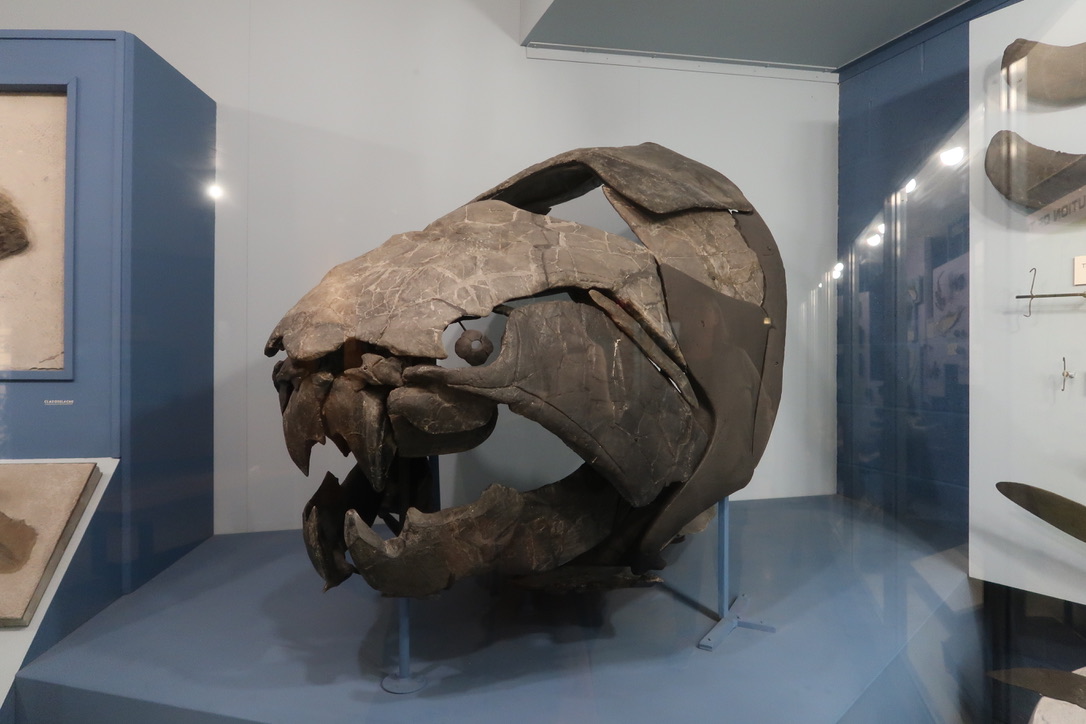
Big and Small – You’ll See it All at the Cleveland Museum of Natural History
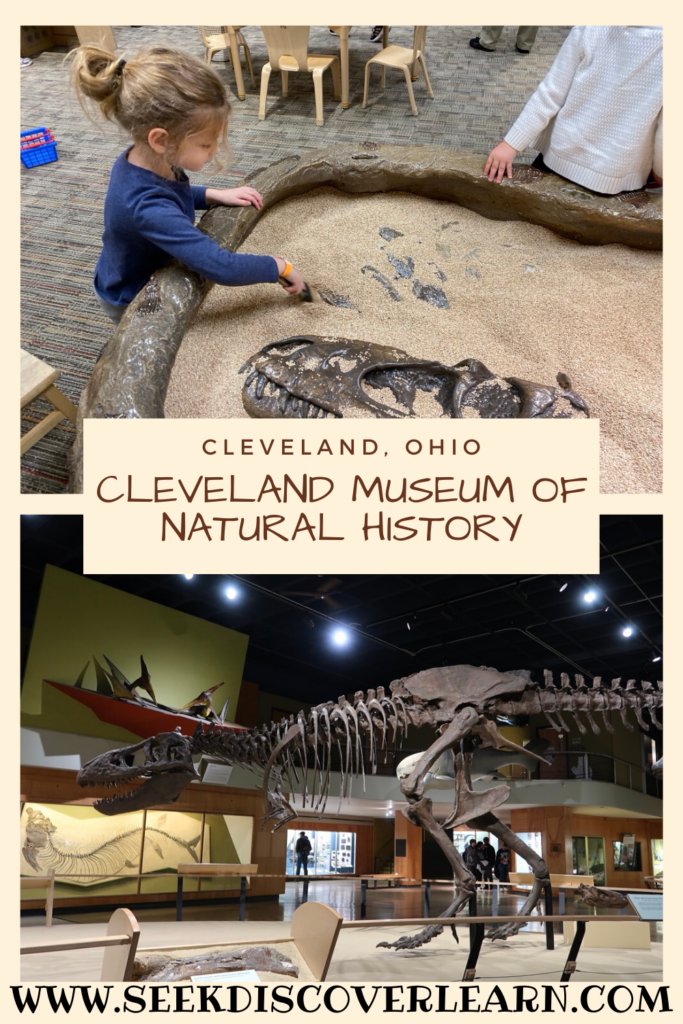
We set out on a quest to visit 7 science centers in Ohio over a span of 4 days, and our 3rd stop was the Cleveland Museum of Natural History. We wanted to put our Kentucky Science Center reciprocal membership benefits to the test and enjoy visiting all 7 museums for FREE.
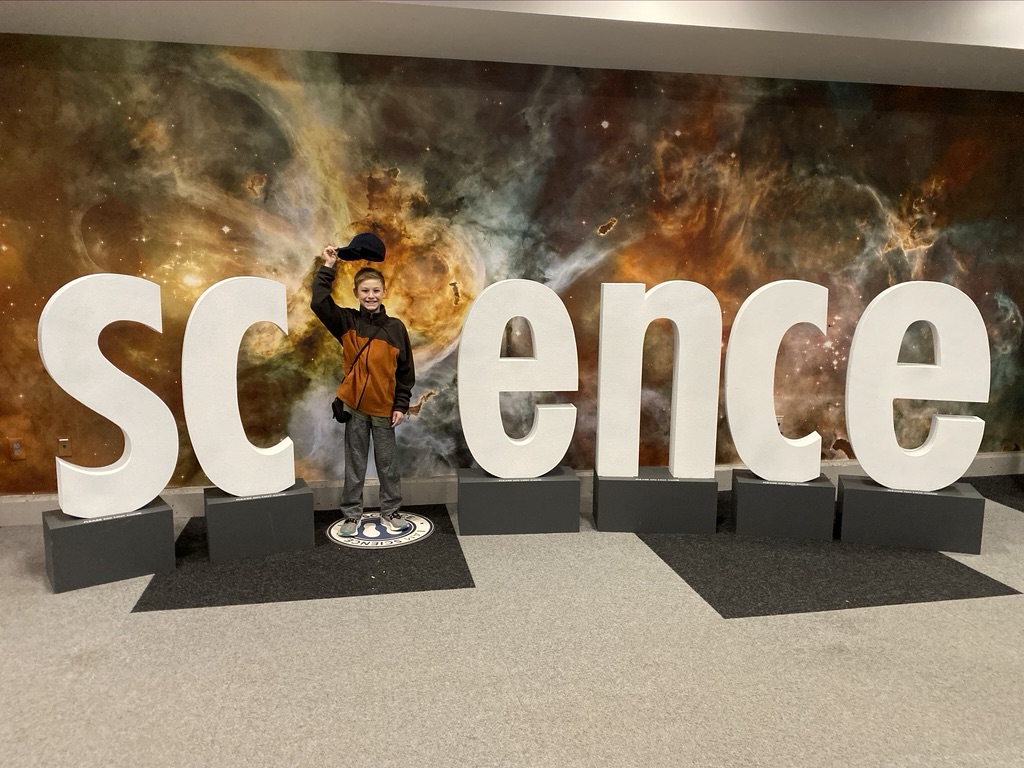
Our first stop was Dayton where we visited the Boonshoft Museum of Discovery and the National Museum of the United States Air Force (which we are calling bonus museum #8 because it’s FREE all the time.). Earlier in the day we went to the Great Lakes Science Center before heading over to our second stop of the day, the Cleveland Museum of Natural History.
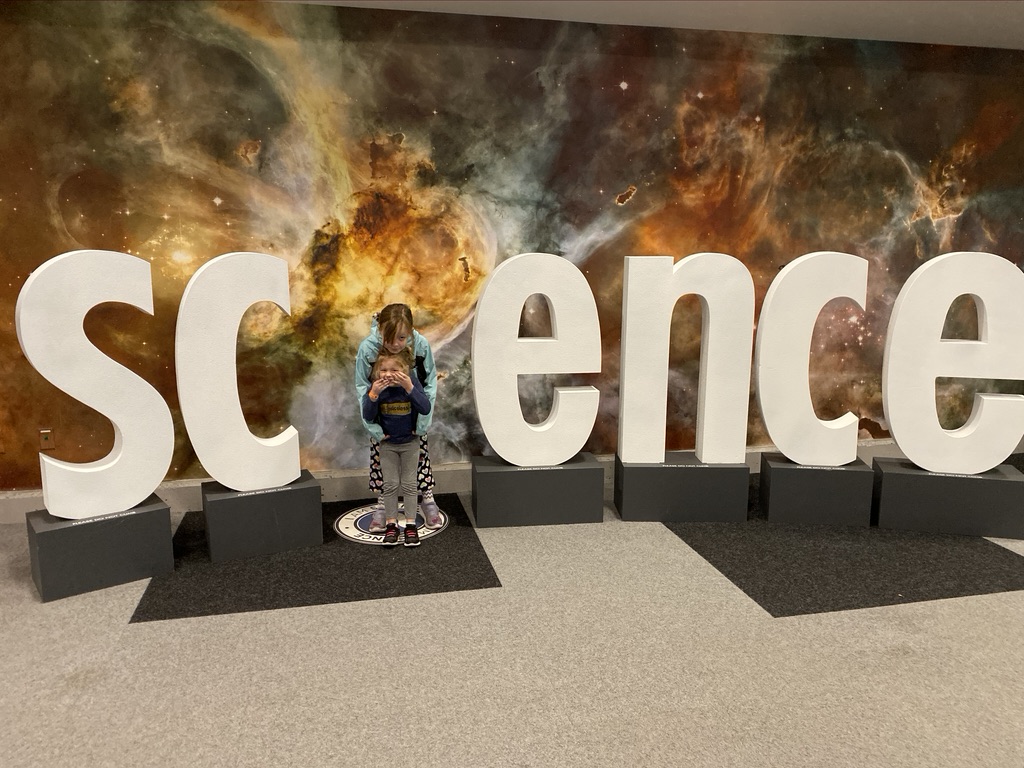
We stopped at the ticket counter and presented our Kentucky Science Center membership card and photo ID (reciprocal benefits generally don’t apply if you live within 90 miles of the museum). Then we were given our FREE tickets and a map and were free to explore the museum on our own.
Admission to the Cleveland Museum of Natural History for our family of 6 would’ve been $90. So far the total museum admission savings for this trip is $254.70. Definitely worth the $97 we spent on our Kentucky Science Center membership!
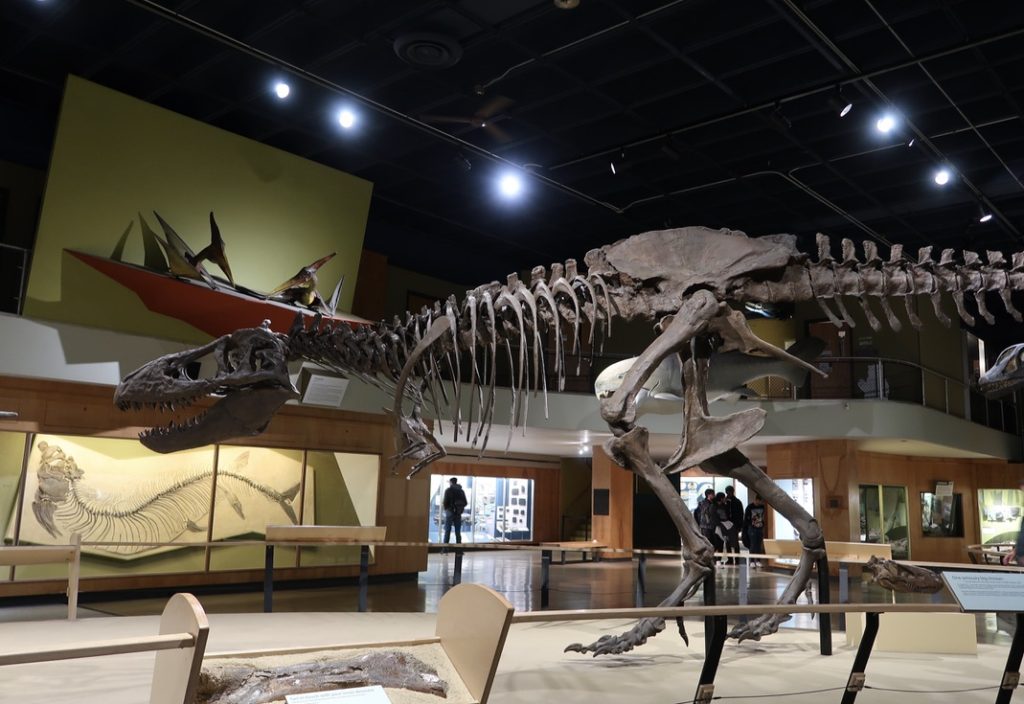
The Cleveland Museum of Natural History is Ohio’s largest museum focused on natural science. There are more than 5 million research specimens and artifacts that are a part of the museum.
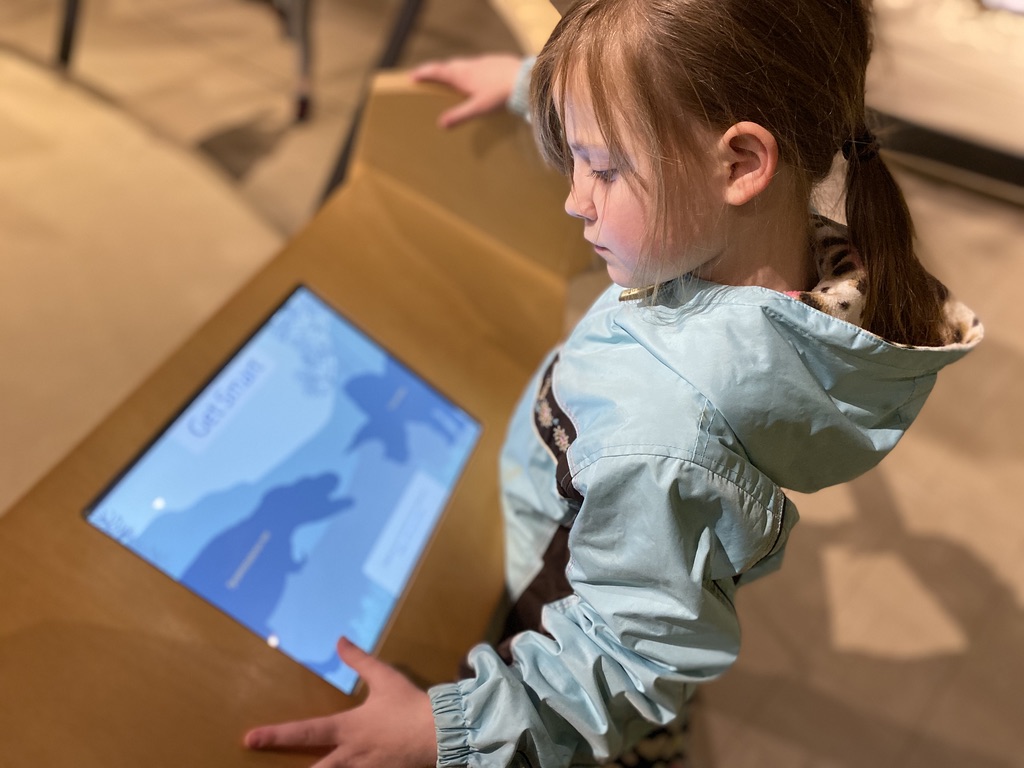
The first exhibit that we saw in the museum was a room full of dinosaur fossils. There were so many different ones to see, and so many various sizes.
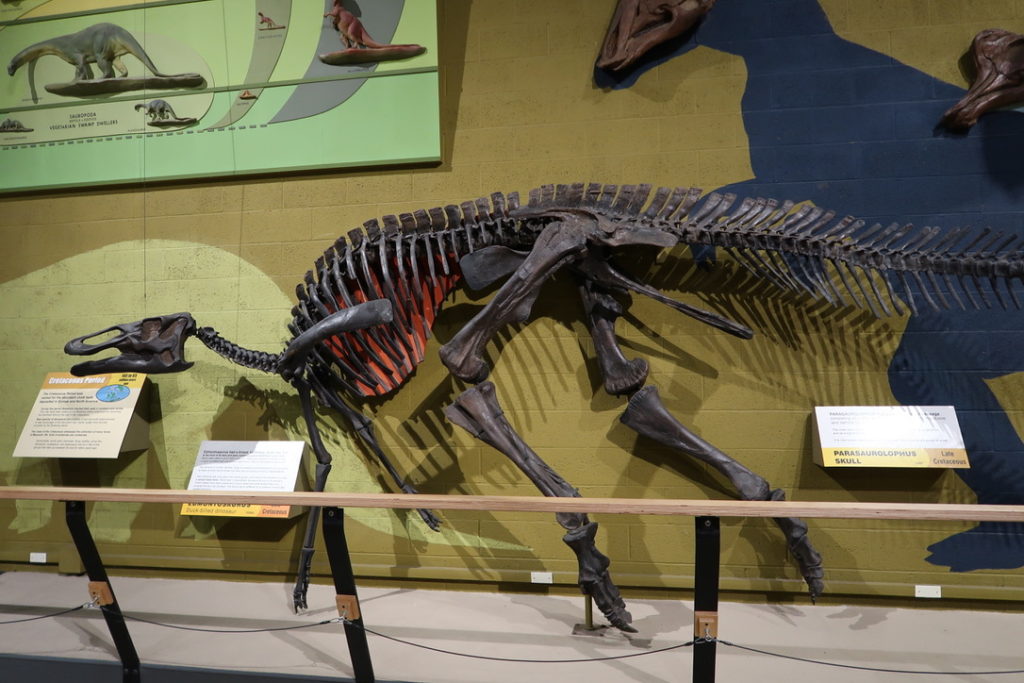
One of the most interesting skeletons they had on display was the large head of a Dunkleosteus terrelli. The Dunkleosteus terrelli was one of the largest and fiercest sea predators. A Dunkleosteus terrelli could be as large as 20 feet in length and weigh more than 1 ton. The massive Dunkleosteus skull has been nicknamed “Dunk,” and has been featured on Animal Planet’s “River Monsters” and “Animal Armageddon.” A rich variety of fossil fish and plants are still being discovered in the Cleveland Shale today.
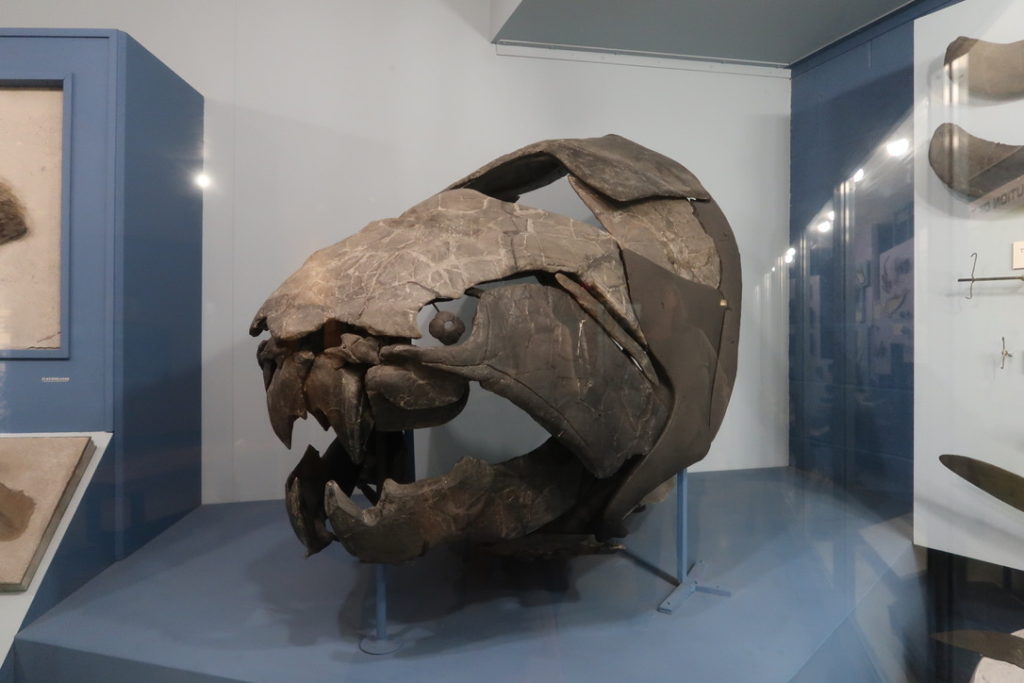
On the lower level is the Smead Discovery Center. Micah and Hadassah enjoyed spending their time in this area. The Smead Discovery Center is a hands-on exhibit geared towards kids 10 and under to enjoy with their families. I think their favorite part was the Fossil Dig tables. They had fun discovering the hidden fossils.
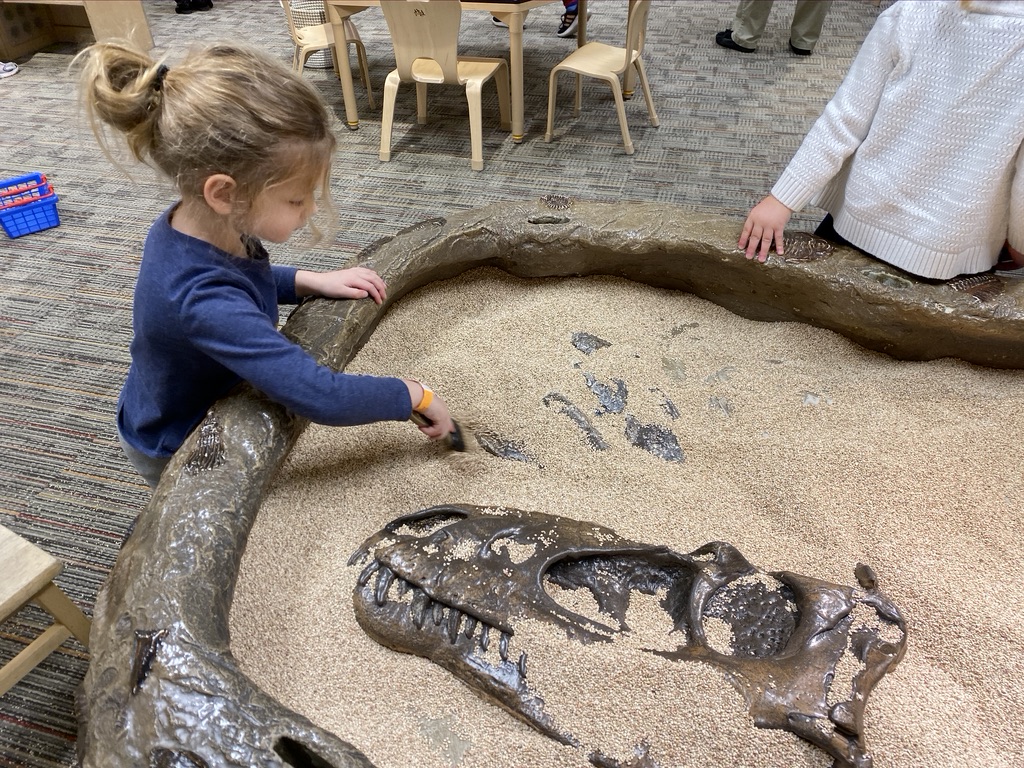
There were also tables with magnifying glasses, crayons, books, dinosaur toys, rocks, and so much more. The girls liked the exhibit where you could listen to different animal sounds. Another favorite area was the supermarket where you could scan your groceries to find out nutritional information about each item.
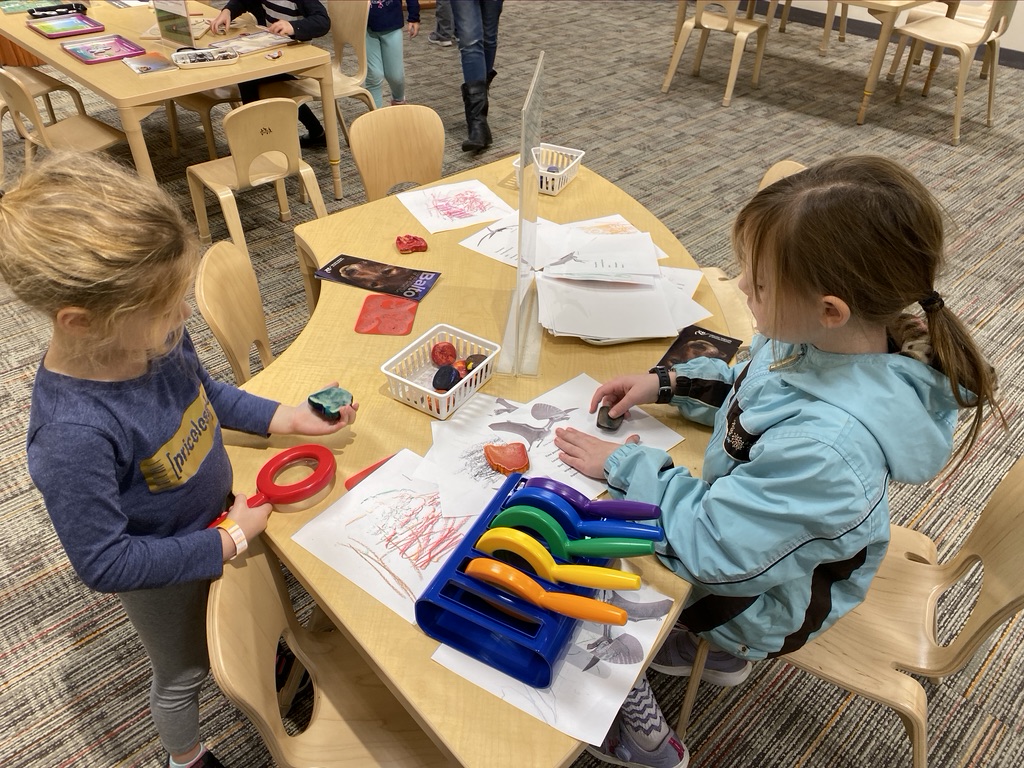
In the hallways of the lower level there were also several display cases full of interesting collections. This one had a variety of skulls. Ranging from Swainson’s thrush, shrew, and tarsier, which were the smallest ones, up to black bear, sea turtle, and crocodile, which were the largest ones.
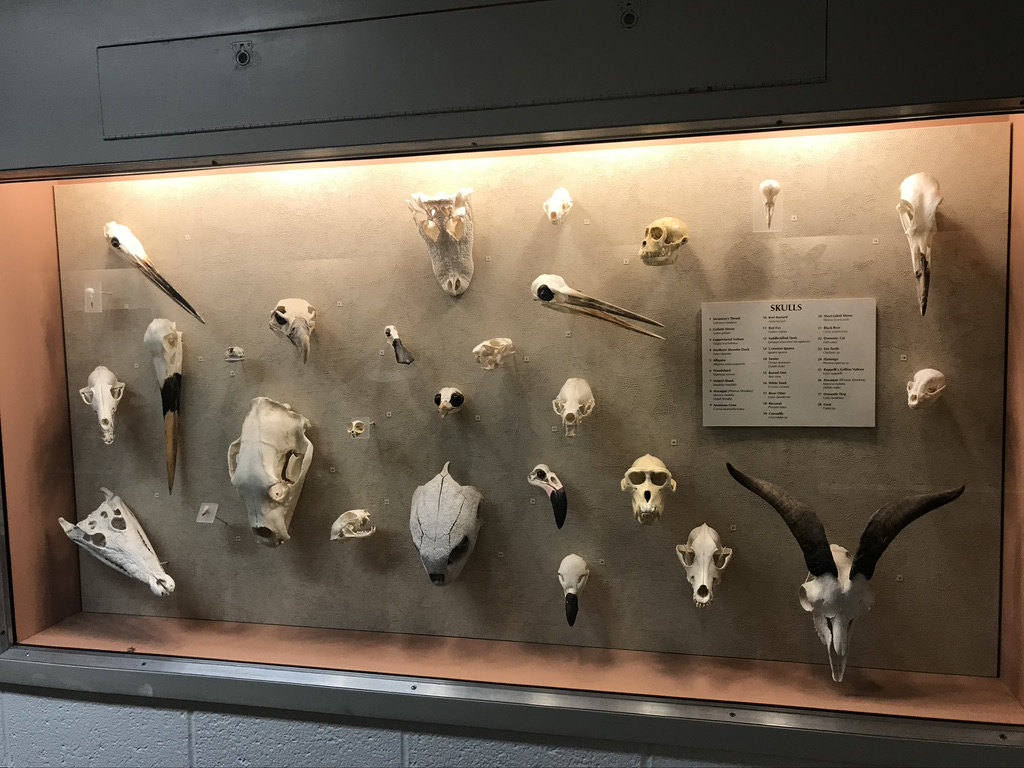
Another neat display contained different shelled animals such as clams, mussels, oysters, snails, limpets, and others. Shape and color are very important when classifying shells. The mussel that is shown on the white placard in the display case below is from Lake Erie and is covered with Zebra Mussels. Close to 70% of North American freshwater mussels are endangered due to harvesting, habitat loss, and take over by other species such as zebra mussels. Thankfully conservationists are trying to protect the vulnerable species.
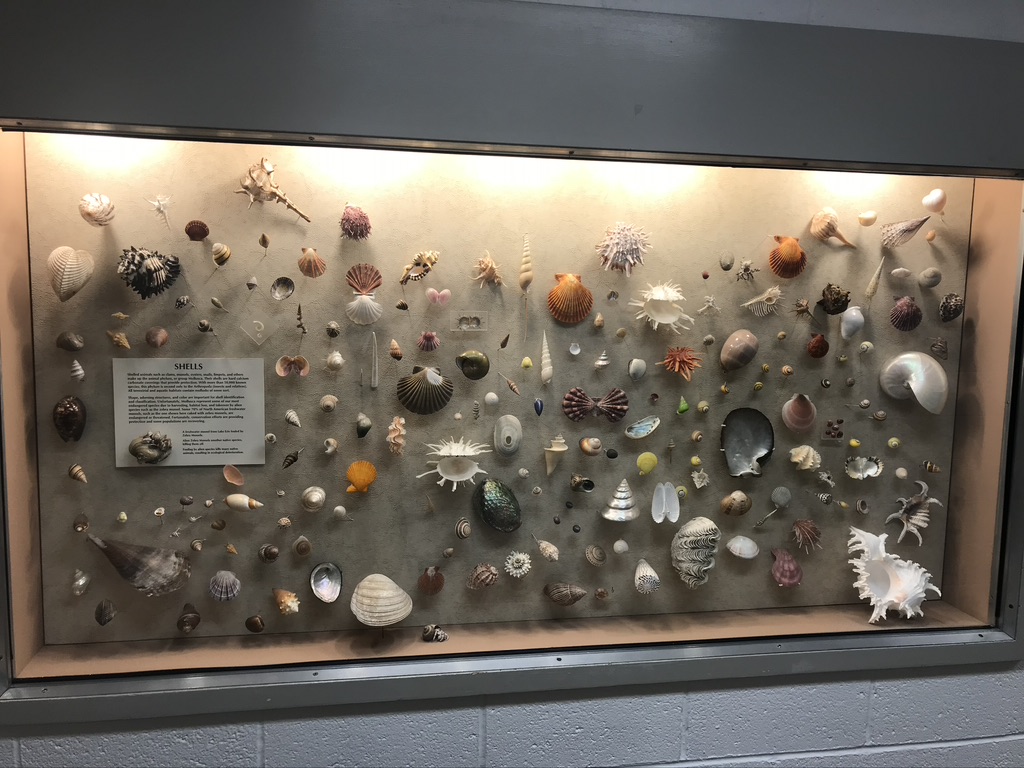
There is a display of bird eggs and nests that includes 32 different types of bird eggs, including ostrich, osprey and emu. Nests include lucy’s warbler, european starling, and field sparrow.
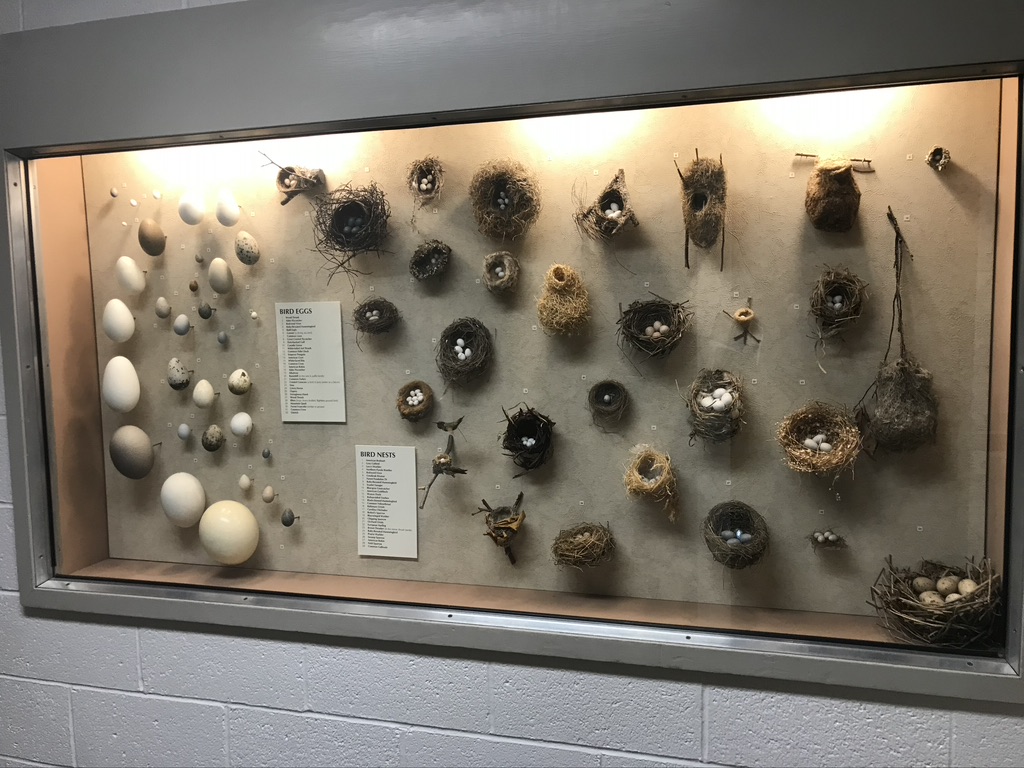
I was fascinated by the butterfly and moth display. I did not realize that there are at least NINE moth species for each butterfly species and that their wingspans can be smaller than 1/2 inch all the way up to 12 inches. I’ve never seen such huge butterflies before. They were absolutely gorgeous. I’d love to see a live one someday.
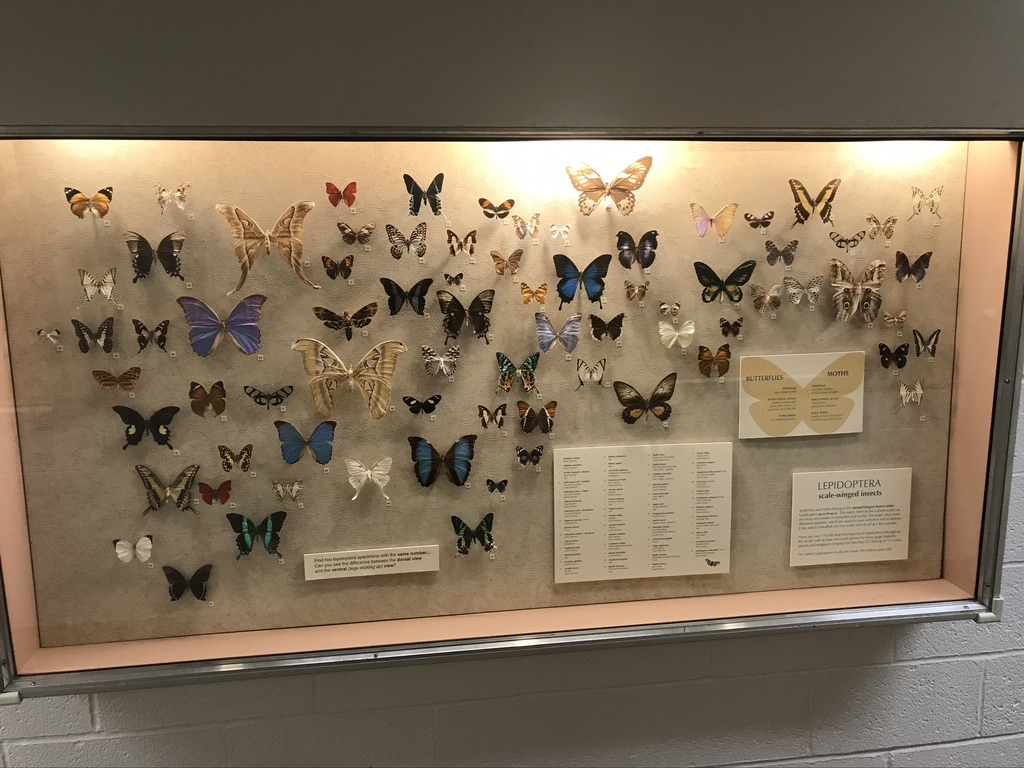
These beetles were both fascinating and terrifying. While I’d love to see one of the large butterflies one day, I hope I never see one of these large beetles! Beetles can range in size from 1/100th of a an inch up to 6 inches. I feel like some of these look larger than 6 inches though! Beetles are also the most common animal group and contain about 350,000 species, with more probably undiscovered.
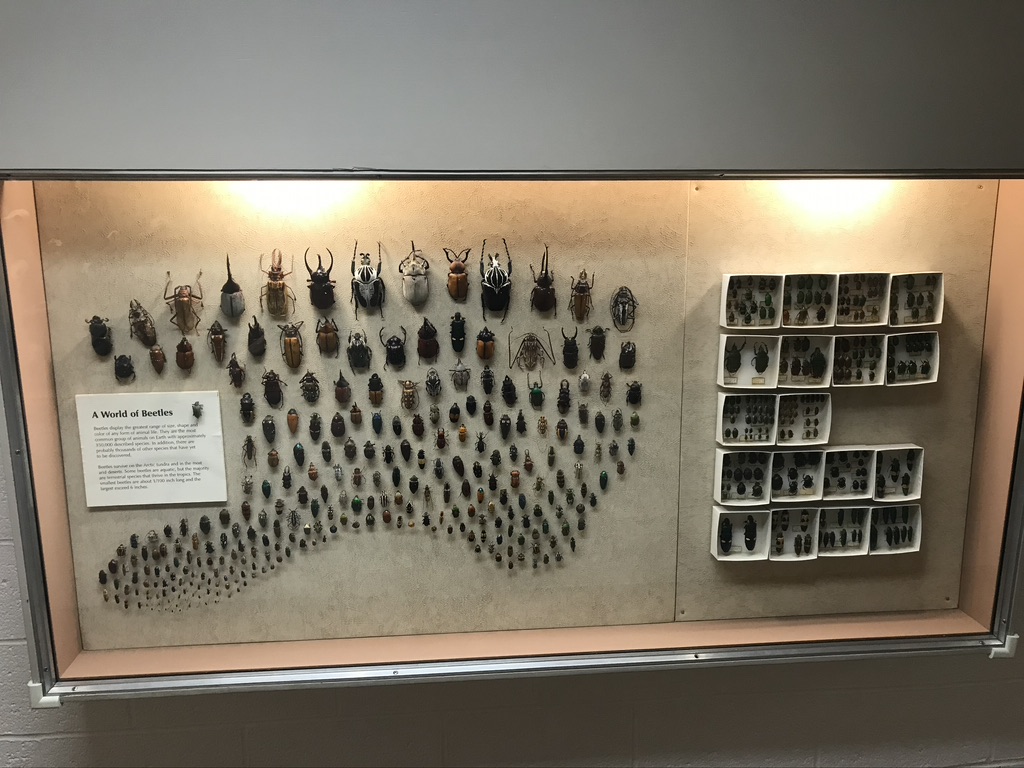
On our road trips I always bring several books to read to the kids while Rob drives, and when possible I bring books that are related to where we are going. I think it helps all of us to learn a little bit before we go so that we have a little bit of context about what we’re looking at. When I was doing my trip planning, mapping out which order we would go to the museums, and which museums looked like the best ones, I ran across the Balto exhibit at the Cleveland Museum of Natural History.
My kids had never seen the Balto movie, and weren’t familiar with the story, let alone the fact that it’s a true story. So I grabbed a book from the library called “The Incredible Life of Balto” by Meghan McCarthy, and we read it on the drive. I didn’t tell the kids that there was going to be a Balto exhibit, so Cullan was so excited when he walked by it.

In 1925 there was an outbreak of diphtheria in Nome, Alaska. Nome is so remote that only dog sleds can reach it in the winter months. Several packs of dogs made a combined 674-mile journey in 6 days to deliver the serum to Nome. Balto was the lead dog on the pack that made the final leg of the trip to Nome. Balto and his teammates were celebrated as heroes across the United States.
Several years later a man from Cleveland, named George Kimble heard that the dogs were being treated badly. He was upset by this and offered to buy them for $2,000. He was given two weeks to come up with the money. Schoolchildren helped collect money, factory workers donated, everyone who heard about the need pulled together to save the dogs. The dogs were purchased and then given a welcome parade in Cleveland before being placed in the zoo to be enjoyed and celebrated by everyone. It is believed that 15,000 people visited the dogs on their first day at the zoo. Balto died at the zoo years later and his body was mounted and is now housed in the Cleveland Museum of Natural History’s permanent collection.
We spent about 2 hours at the museum, and easily could’ve spent a couple more. I felt like the map made the museum seem kind of small, but it was actually rather large. There were lots of neat exhibits to see, and the Smead Discovery Center was a great hands-on area for the kids.
They also had a fun scavenger hunt for the kids to do too. There are several “hamburgers” hidden in the exhibits. The first hamburger that we saw was inside a dinosaur’s mouth. The dinosaur was suspended from the ceiling, so we weren’t sure what exactly we were seeing inside it’s mouth. At first we thought someone had thrown their actual hamburger up there. We kept walking along and saw another hamburger hidden in another exhibit. After we found the second one I sent Cullan back up to the ticket booth to ask about it. They told him he’d discovered the scavenger hunt, gave him a scavenger hunt sheet, and told him to be on the lookout for the others. He was instantly hooked, and spent the rest of the visit trying to locate them all.
For another look at our visit to the Cleveland Museum of Natural History you can watch our YouTube video below.
PIN for later
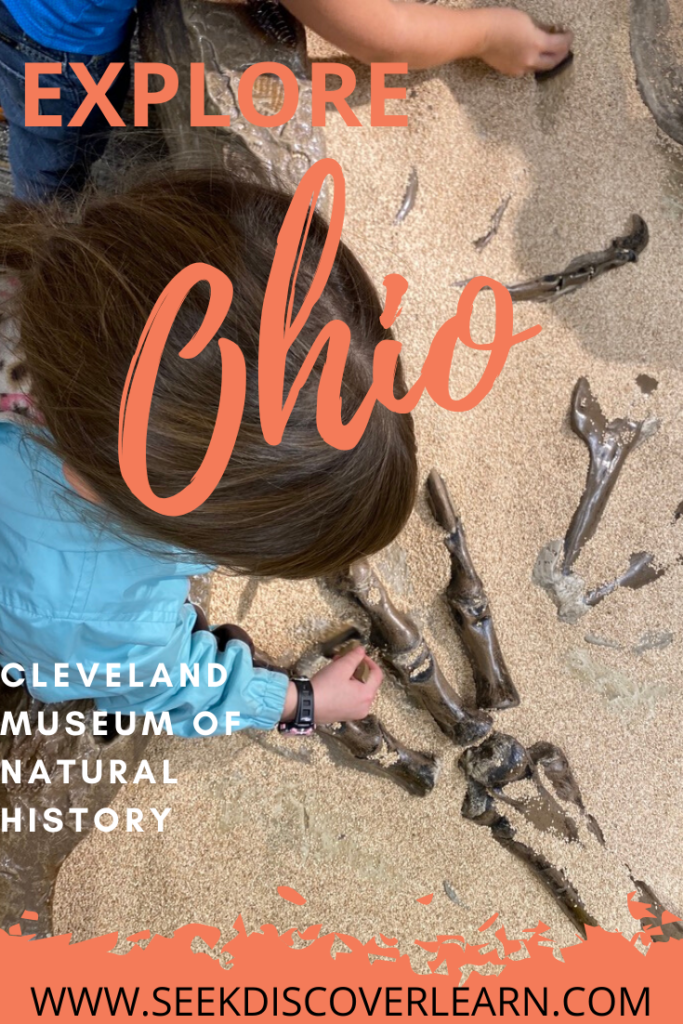
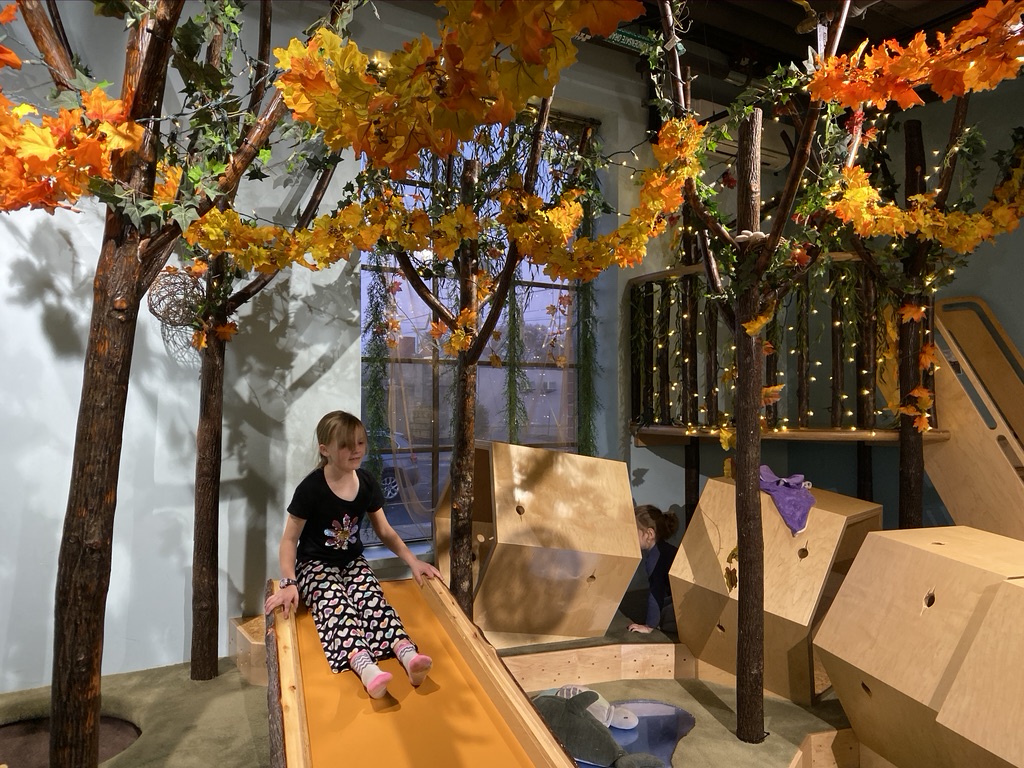

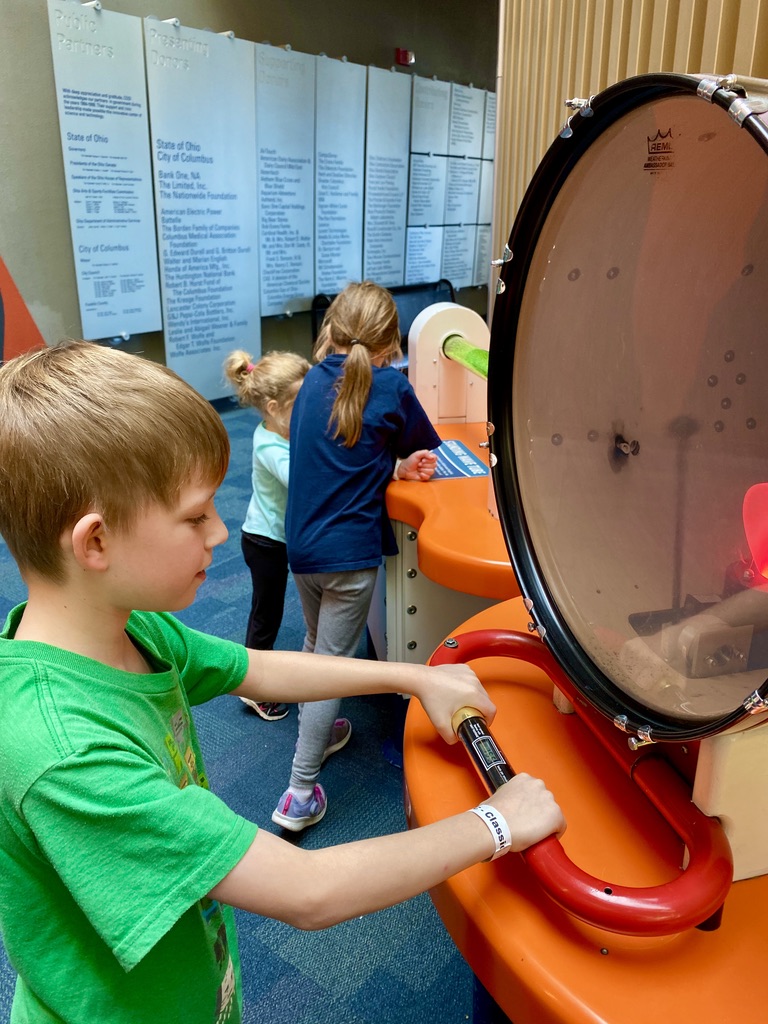
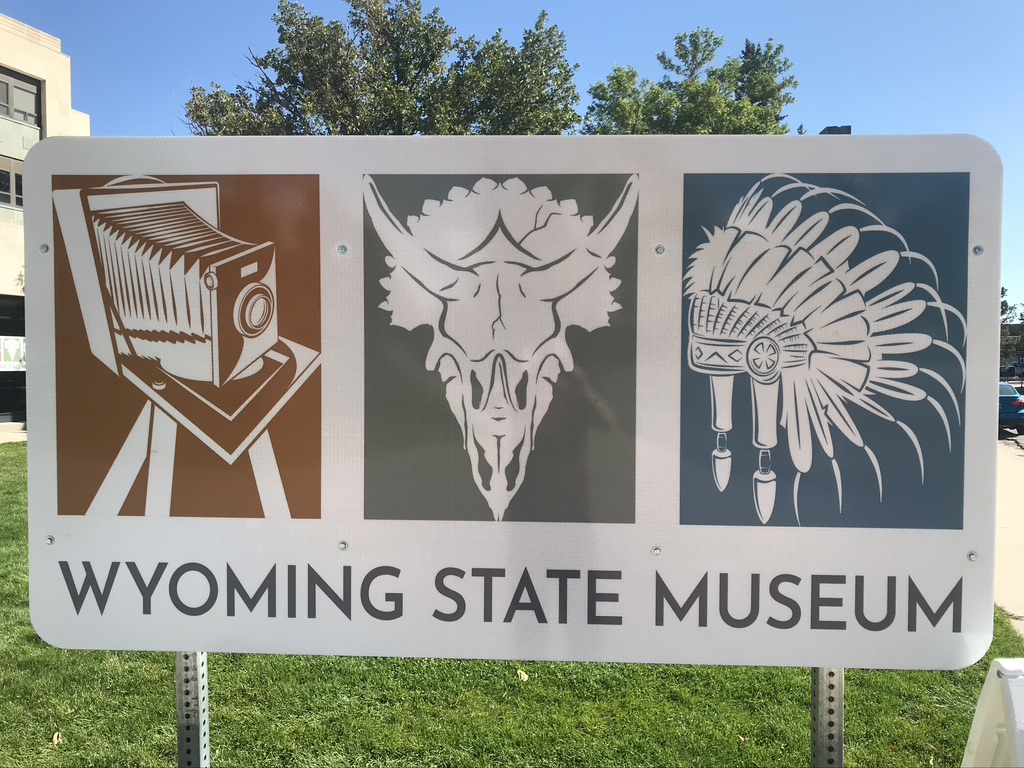
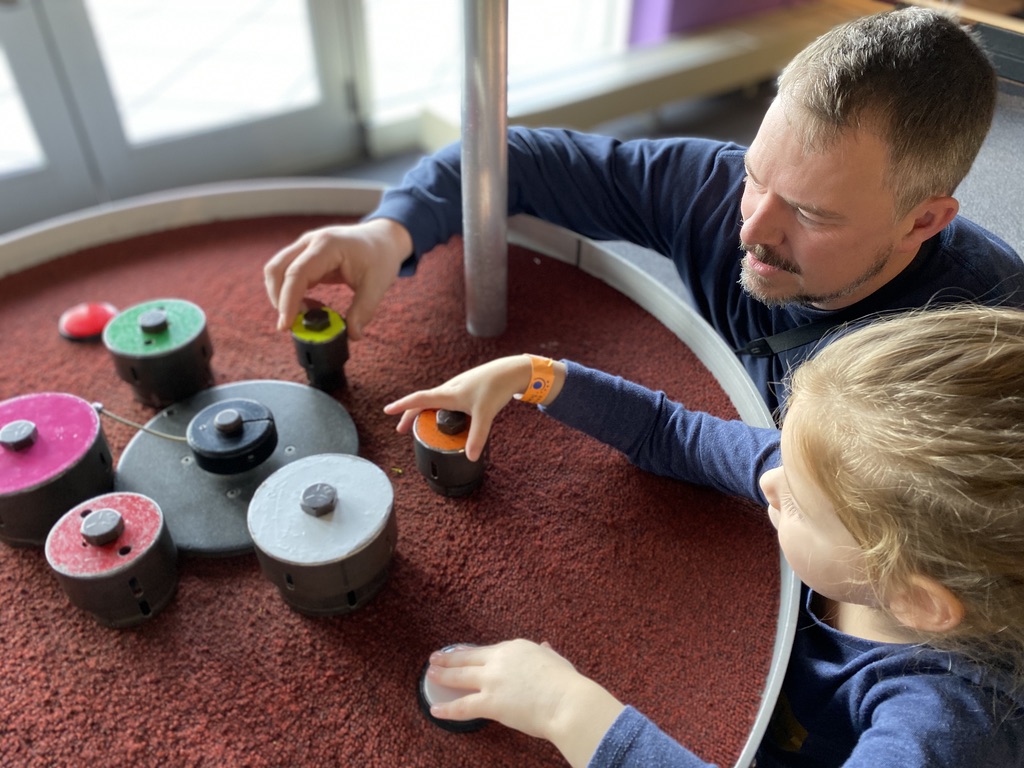
40 Comments
Kallie
This museum looks like so much fun!
Sara W
We really enjoyed our afternoon there. So many amazing things to see.
Jennifer Van Haitsma
This looks so fun! My kids are obsessed with butterflies lately, and love dinosaurs too so this would be the perfect family day.
Sara W
There’s exhibits on both, so you should definitely go.
Audrey
This looks like such a fun museum! If we are ever in Cleveland I’ll have to check it out.
Sara W
It’s a great place for adults and kids.
Surabhi
Museum looks very interesting! The dinosaurs are so fascinating.
Sara W
I’m always amazed at how large the dinosaurs were.
Caressa Walker
The musuem of natural history is such a fun place to take kids and I noticed at the museum in our city that there are very few people coming out as of now. Hope you and your family had fun!
Sara W
We visited back in November before everything shut down. I’m glad things are opening back up though.
Pam
Looks like a great museum! We were going to hit Cleveland on our summer road trip (that of course was cancelled), but next year, I’ll have to be sure to add this to the itinerary!
Sara W
We are hoping to be able to head back there one day. There were so many great things to do in the area.
Donna Garrison
I had no idea that the story of Balto was real either. Now I will have to pick up that book. Fascinating. Hands on activities at museums are always a hit with our daughter as well.
Sara W
The story of Balto is such a great one.
Shirley
What a wonderful adventure! From the pics it looks like the kiddos all had a grand time.
Sara W
They loved it, and each had their favorite sections.
Missy
We love visiting museums. I really like when there is interactive activities too.
Sara W
The interactive activities definitely make the museums come alive.
Lisa Manderino
Wow, I love that story of Balto! What a fun exhibit!
Sara W
I love being able to read something in a book and then take my kids to see something tangible that ties into the book. It’s a great way to enhance their learning experience.
heather J jandrue
My son would love the exhibit with all the bird nests. He has taken up birdwatching this year and loves everything about it!
Sara W
What a great hobby to have.
Lori Nielsen
Love those reciprocal benefits! This looks like a fun museum. My grandkids would love it!
Sara W
The reciprocal benefits have saved our family of 6 so much money, and has allowed us to get to visit museums that we wouldn’t ordinarily go to.
Adrian Pottinger
My daughter would love this
Sara W
You should take her!
Tricia Snow
This looks like a special place for kids! I love Natural History Museums!
Sara W
We do too, there are so many great things we can learn about.
Chantelle
This looks fun! That membership is such a great savings!! That’s a huge win!
Sara W
It definitely makes it more affordable to visit museums for a family of 6.
melissa
I love the reciprocity between museums; we’ve used our membership at different places, too. This looks like a fun place to visit! My kids would love all of the dinosaur and bug exhibits, as well as hunting for hamburgers!
Sara W
The hamburger hunt was definitely a nice surprise.
Carey
My kids really enjoy museums like this. We have a few near us and the dinosaur displays are always a winner.
Sara W
Dinosaurs are always a big hit with my kids too.
Barbara
Dinosaurs are so fascinating to learn about!
Sara W
I agree!
kmf
That reciprocity program is so awesome! And, wow! Seven museums in four days…you are all rock stars…and how fun! I love natural history museums…and this one looks very hands-on for even more fun.
Sara W
We were exhausted by the end, but overall we had a great time.
Cindy Moore
Science museums are my favorite! This one looks perfect.
Sara W
It had a lot of neat exhibits and fun things for the kids to enjoy as well as the adults.